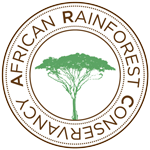If you’ve been following our Summer Giving Campaign then you’ve already heard the news that we’ve partnered with the Earth Day Network and the UNEP Billion Tree Campaign to plant one million trees in Tanzania with our field partner TFCG. We thought this would be a good opportunity to officially introduce you to our partners, give you more details about the project, and invite you to join our partnership – whether you are an individual, corporation, school, or community group, we would like to hear from you!
 Earth Day Network
Earth Day Network
Earth Day Network’s mission is to broaden, diversify and activate the environmental movement worldwide, driving action year-round (Earth Day is every day!) through a combination of education, public policy, and consumer campaigns. At the center of their work is the Billion Acts of Green campaign – the largest environmental service campaign in the world – that has over 221 million Earth friendly acts committed to date. As part of the Billion Acts of Green, ARC has pledged to plant 1 million trees in Tanzania this year.
 United Nations Environment Programme (UNEP) Billion Tree Campaign
United Nations Environment Programme (UNEP) Billion Tree Campaign
The UNEP Billion Tree Campaign encourages people, communities, organizations, business and industry, civil society and governments to plant trees and enter their tree planting commitments in an official online database (hint, if you are looking for ARC-TFCG pledge it is listed under the United States of America). The campaign’s objective is to collaboratively plant at least one billion trees worldwide each year. To date the campaign has planted nearly 12 billion out of 13 billion pledged trees. ARC and TFCG are proud to have contributed 7 million trees to this campaign (6 million planted between 2007 and 2010 and 1 million pledged for 2011).
ARC’s One Million Tree Campaign
Who: 100 villages, approximately 100,000 people
What: planting 1 million trees
When: 2011 – 2012
Where: Tanzania’s Eastern Arc and coastal forests
Cost: 50 cents per tree, which includes seeds, polythene tubes used for planting, and training.
What types of trees will be planted? A mixture of indigenous and exotic trees. Communities decide on the types of trees they would like to plant to meet their specific needs, although indigenous trees are always strongly encouraged.
Why plant trees with local communities and not replant the rainforest? The primary purpose of this project is to conserve the rainforest that remains by providing alternative fuel wood and timber sources to local communities who have traditionally relied on forest resources. Fruit trees (such as citrus, avocado, and mango) are also planted, which enhance community nutrition and in some cases provide income generation through sale of fruit at local markets.
How long does it take for a seedling to mature into a tree? Seedlings spend six months to one year in a community or school run nursery before they are transplanted to community land plots and distributed to families. It takes approximately five years for a seedling to become big enough to use for a pole (for construction) and eight years for it to be large enough to use for fuel wood and timber.
How can I join this partnership? You can learn more about this project at www.africanrainforest.org, and contact Kate McLetchie, Executive Director of African Rainforest Conservancy at kate@africanrainforest.orgor (212) 431-5508.


Leave A Comment